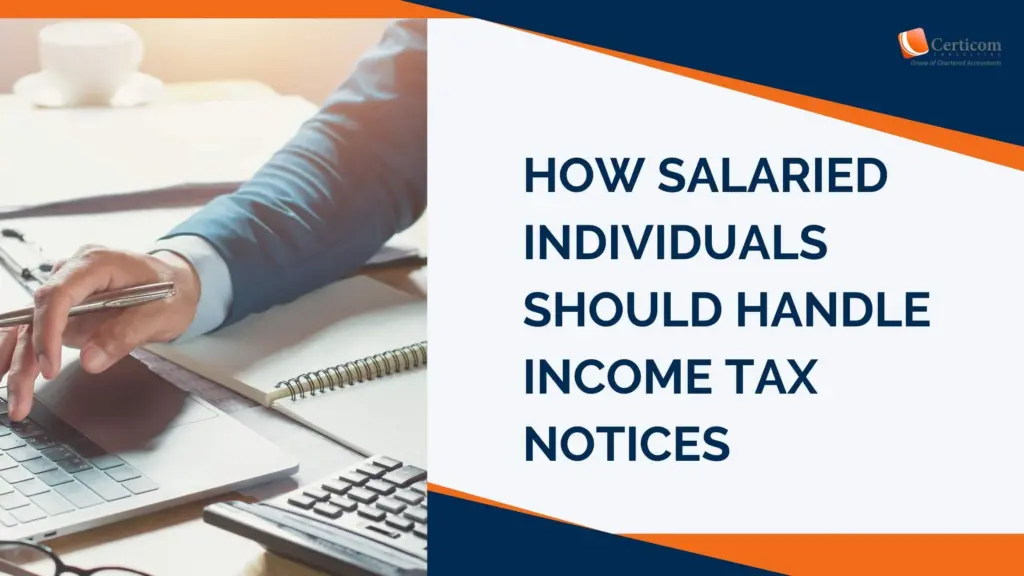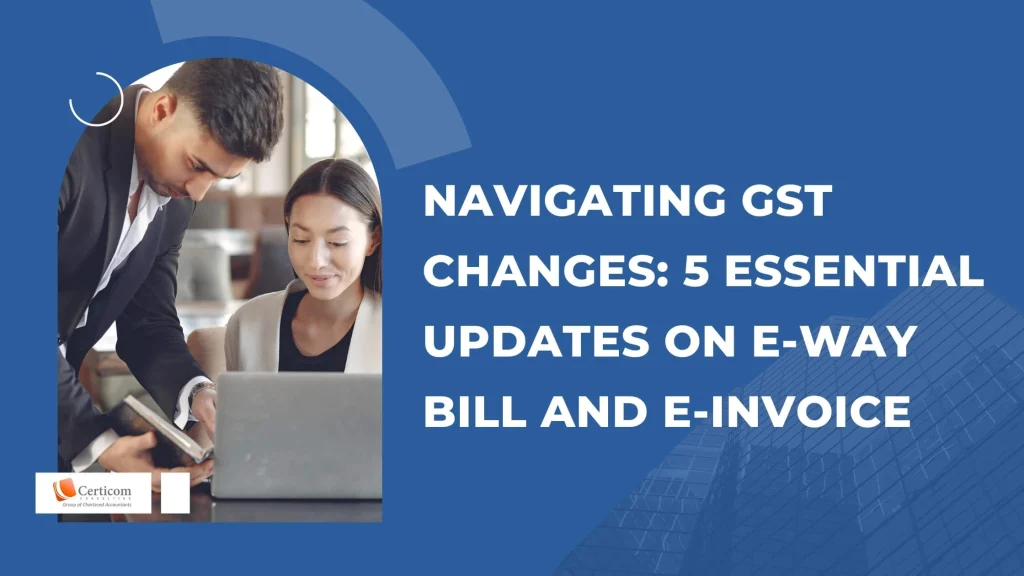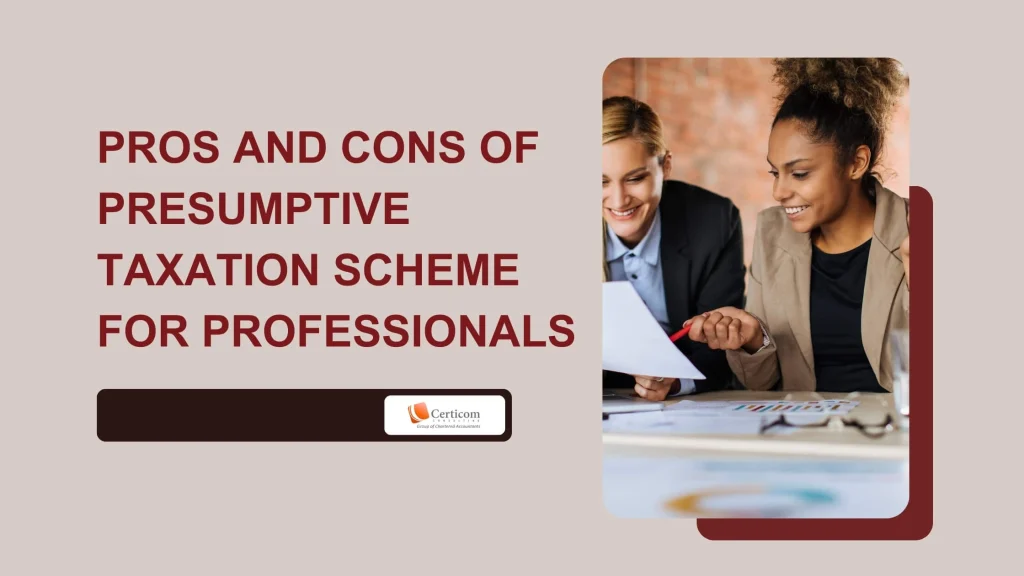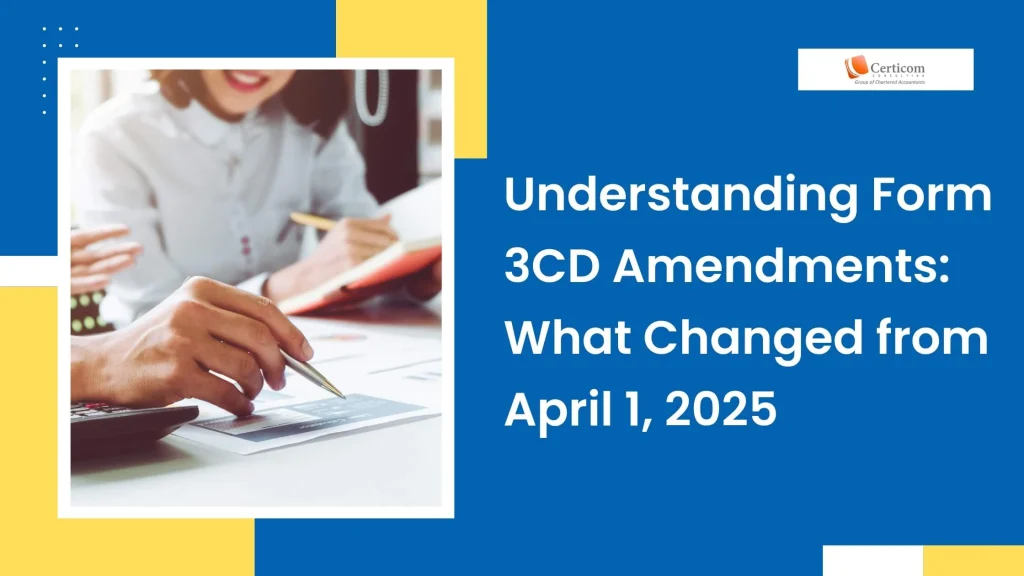How Salaried Individuals Should Handle Income Tax Notices

Income tax compliance is crucial for salaried individuals to avoid legal complications and scrutiny from the Income Tax Department. With advancements in data analytics and artificial intelligence (AI), tax filings are monitored more rigorously, increasing the likelihood of receiving notices for discrepancies. These notices often arise due to misreported income, incorrect claims, or errors in returns. This guide explores the types of income tax notices salaried individuals may receive and offers practical tips to handle them effectively, along with the importance of seeking professional assistance.
Common Income Tax Notices for Salaried Individuals
Section 143(1): Intimation Notice
This notice is issued after the initial processing of an Income Tax Return (ITR) and highlights three possibilities:
- No discrepancies are found.
- There is additional tax demand.
- A refund is due.
Example:
If you claim a refund of ₹10,000, but Form 26AS reflects TDS of only ₹5,000, the notice will raise a demand for the ₹5,000 shortfall. You can address such issues by rectifying discrepancies or filing a response under Section 154.

Section 139(9): Defective Return Notice
This notice is sent when an ITR is deemed incomplete or contains errors, such as using the wrong ITR form or missing mandatory details.
Example:
Filing ITR-1 while reporting income from property will trigger a defective return notice since ITR-2 is the appropriate form. Taxpayers must correct and refile their returns within the specified timeframe, or the return will be treated as invalid.
Section 143(2): Scrutiny Notice
A scrutiny notice calls for a detailed examination of an ITR, focusing on specific claims or the overall return.
Example:
Claiming a high deduction under Section 80D for medical insurance without proper documentation may result in a scrutiny notice. You must provide supporting evidence within the stipulated period to address the inquiry.
Section 148: Reassessment Notice
This notice is issued when the department believes income has escaped assessment for a previous financial year.
Example:
If you sell property but fail to report the capital gains, the department may issue this notice. You must respond by filing a revised return or submitting an explanation.
Section 156: Demand Notice
This notice informs the taxpayer of outstanding dues, including unpaid taxes, interest, or penalties.
Example:
If the department discovers underreported income leading to an additional tax liability of ₹25,000, a demand notice will be issued. Non-payment within the deadline can attract penalties and interest under Sections 220(2) and 221.
Tips to Avoid Income Tax Notices
Maintain Accurate Records:
Retain documents like Form 16, Form 26AS, salary slips, investment proofs, and receipts for deductions (e.g., HRA, Section 80C, and medical insurance).File ITR on Time:
Timely filing reduces errors and provides an opportunity to revise returns under Section 139(5).Verify Form 26AS and AIS/TIS:
Ensure consistency between your tax records, Annual Information Statement (AIS), and Taxpayer Information Summary (TIS).Claim Deductions Prudently:
Deduct only eligible amounts supported by valid documentation.

Steps to Follow Upon Receiving an Income Tax Notice
Verify the Notice’s Authenticity:
Check the Document Identification Number (DIN) on the official income tax portal to confirm the notice is genuine.Understand the Notice:
Read the notice thoroughly to identify the issue and the required action.Organize Supporting Documents:
Gather relevant records such as Form 16, bank statements, and investment proofs.Respond Promptly and Accurately:
Use the e-filing portal to respond to the notice within the specified deadline. Seek professional help if needed to ensure the response is precise and effective.
By following these guidelines, salaried individuals can maintain compliance and handle income tax notices with confidence. Professional assistance can be invaluable in addressing complex issues, ensuring a smooth resolution, and avoiding further complications.
Related Post
Pros and Cons of Presumptive Taxation Scheme for Professionals
Understanding Form 3CD Amendments: What Changed from April 1, 2025
Book A One To One Consultation Now For FREE
How can we help? *




